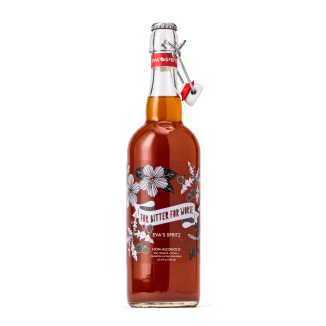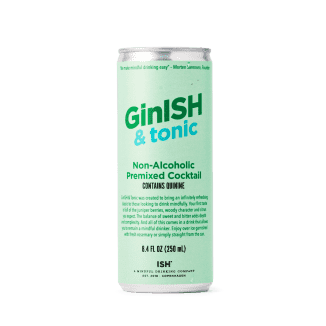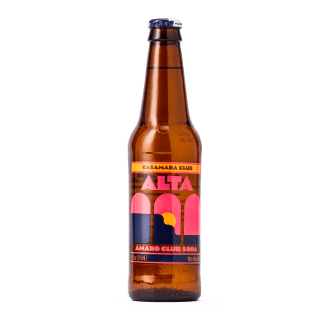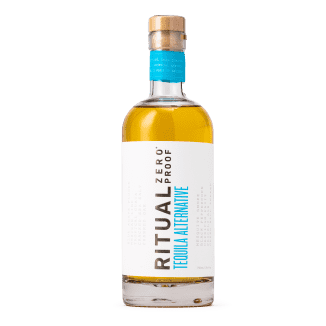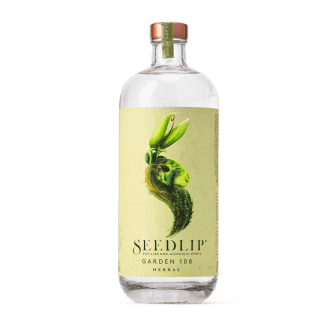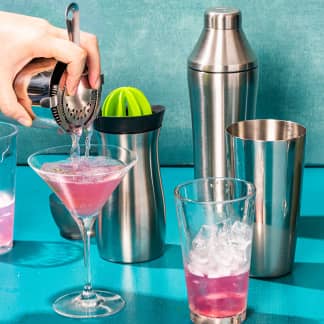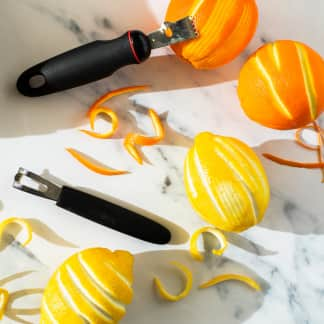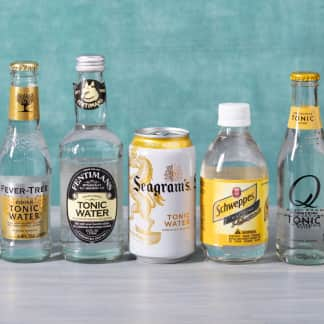For years, ordering a nonalcoholic beverage at a restaurant or bar meant you’d be offered a Shirley Temple or an iced tea. While those drinks have their merits, they pale in comparison to the more varied and complex options available to those who drink alcohol. In the last few years there’s been a noticeable shift in drinking culture worldwide. Many people have started to become more conscious of their alcohol intake. The percentage of adult drinkers in the United States decreased by almost five points between 2019 and 2021, according to a survey by Gallup.
Today, nonalcoholic bars and alcohol-free bottle shops are popping up in cities across the country. Nonalcoholic spins on familiar cocktails and recipes for inventive new nonalcoholic cocktails are appearing both in print and online. Restaurants and bars are offering more nonalcoholic options.
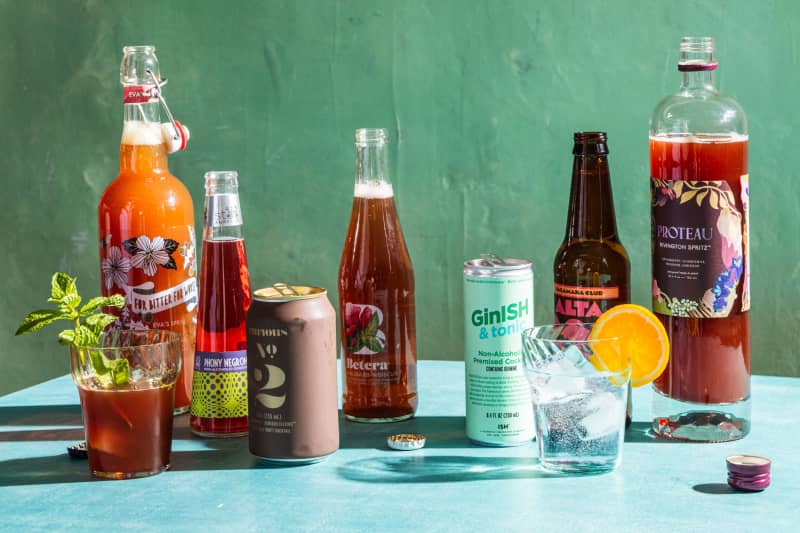
So what should you be looking for when buying nonalcoholic beverages? To get a handle on what's worth buying, we purchased 16 products. Seven were premade cocktails. Of those seven, five were single serve and two were in larger bottles meant for sharing. The other nine products we tasted were “spirits.” Of those, four were modeled after specific styles of liquor (tequila, gin, etc.) and five claimed to be unlike anything else.
How Nonalcoholic Drinks Are Made and Alcohol By Volume (ABV)
The complex flavors of alcoholic drinks have historically been challenging to mimic without alcohol for a few reasons. First, the burn of alcohol is hard to replicate. Second, alcohol is great at extracting and carrying flavors. Alcohol can dissolve nonpolar molecules, a category that includes most of the flavor molecules in botanical ingredients. This means that alcohol is able to absorb and carry the flavor molecules from these types of ingredients more effectively than liquids like water can.
According to the Food and Drug Administration (FDA), a beverage can contain up to 0.5 percent alcohol by volume (ABV) and still be considered nonalcoholic in the U.S. Another noteworthy fact: Fruit juice and bread can contain similar levels of alcohol due to the presence of fermentation.
In 2015, a company based in the United Kingdom, Seedlip, was the first to soak ingredients in grain alcohol to extract flavors and then use special technology to remove the alcohol from this liquid. While this method is great at extracting flavors (many of the manufacturers in our lineup now use similar processing methods), it often leaves trace amounts of alcohol behind. A surprising fact: According to the Food and Drug Administration (FDA), a beverage can contain up to 0.5 percent alcohol by volume (ABV) and still be considered nonalcoholic in the U.S. Another noteworthy fact: Fruit juice and bread can contain similar levels of alcohol due to the presence of fermentation.
Many of the products in our lineup contain herbs, barks, or adaptogens (active ingredients found in plants or mushrooms like damiana extract that, according to the Cleveland Clinic, may reduce stress and anxiety). Due to the trace amounts of alcohol and the presence of these other ingredients, not every nonalcoholic drink is suitable for every person.
Some companies avoid the use of alcohol altogether. This allows the finished product to contain 0 percent ABV. Companies that disclosed details about their processing methods to us explained that they’re still distilling and macerating ingredients, just without alcohol.
While our tasters enjoyed some products more than others, it didn’t matter if they were processed from an infused liquid that once contained alcohol or from one that did not. Products in each style earned high marks.

When Replacing Alcohol, Don’t Expect Identical Results
While several of the cocktails and spirits in our lineup were unlike anything we’d tasted before, some of the products aimed to mimic popular classic cocktails or act as a one-to-one replacement for a certain type of liquor. We wanted to know how closely these products compared to what they promised to replace. One ready-to-drink cocktail in our lineup mimicked a negroni so well that one taster said, “This is an amazing proxy for an actual negroni. They got the balance of syrupy sweetness, bracing bitterness, and slight citrusy finish just right.” A replacement for tequila also pleased our tasters. It had “a bit of a burn that mimics a real tequila.” The other ready-to-drink cocktails and spirit replacements didn’t do as well, struggling to capture their counterparts' complex flavors. Though two of brands in our lineup successfully imitated their alcoholic counterparts, Julia Bainbirdge, author of Good Drinks: Alcohol-Free Recipes for When You're Not Drinking for Whatever Reason (2020), urges folks to not focus on how a product stacks up against its alcoholic counterpart but instead focus on whether or not it tastes good. "If you like it, I think that matters much more than whether or not it tastes exactly like a ‘real’ Negroni.”
What Makes a Good Nonalcoholic Drink?
Interested in learning what makes a good nonalcoholic drink, we turned to Laura Silverman, founder of Zero Proof Nation, a company devoted to building community around the zero-proof lifestyle. Silverman celebrates the fact that "non-alcoholic beverages aren’t just sodas" and credits a friend of hers, Charlie Berkinshaw of Element Shrub, with helping to form her view that “a non-alcoholic cocktail achieves greatness when it hits a balance of sweetness, acidity, bitterness, and texture.”



Companies incorporate ingredients such as ancho and jalapeño chiles and ginger to replicate the burn we associate with alcohol. They also use gentian root, bitter orange, and Italian chinotto (a type of orange), among other ingredients to give their products bitter notes.
Many products in our lineup contain ingredients used in liquor and cocktails, such as juniper, citrus, and rosemary. One spirit was infused with peas and hay, which gave it an earthy and grassy flavor. Companies incorporate ingredients such as ancho and jalapeño chiles and ginger to replicate the burn we associate with alcohol. They also use gentian root, bitter orange, and Italian chinotto (a type of orange), among other ingredients to give their products bitter notes. These ingredients force us to sip slowly. We have a physiological response to bitterness that tells us what we’re consuming might be poisonous, according to an article that was originally published in the journal Progress in Molecular Biology and Translational Science. Every ready-to-drink cocktail in our lineup was carbonated; the bubbles not only added body but also cut the sweetness. Some brands add glycerin or other thickeners to give their drinks body. The consistency of the drinks in our lineup ranged from thin like water to a thicker consistency like apple cider. Our tasters had a slight preference for those with more body.
Our tasters had preferences among the 16 options we tried. We've organized them below into two categories: ready-to-drink cocktails and spirits that are intended to be sipped plain or used in cocktails or mixed drinks. In addition to providing tasting notes, we've offered suggestions for how to use each at home. Whether you regularly enjoy nonalcoholic beverages or are considering buying them for the first time, we hope you find several options to experiment with and enjoy.
- Sample plain
- Where applicable, mix with tonic or soda or prepare in a simple cocktail per the manufacturer’s recommendations
- Complex with balanced sweetness, bitterness, and acidity




 Buy at Curious Elixirs
Buy at Curious Elixirs